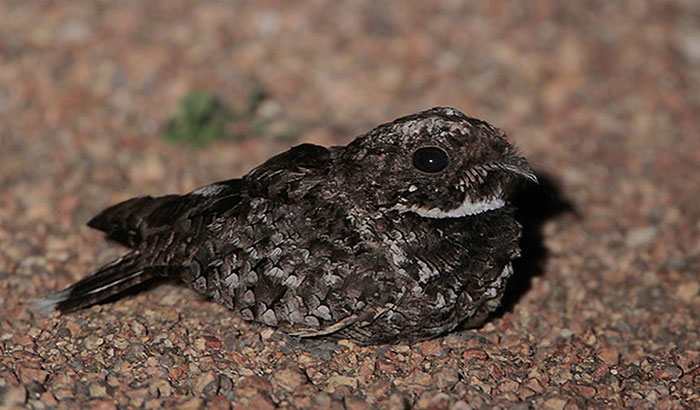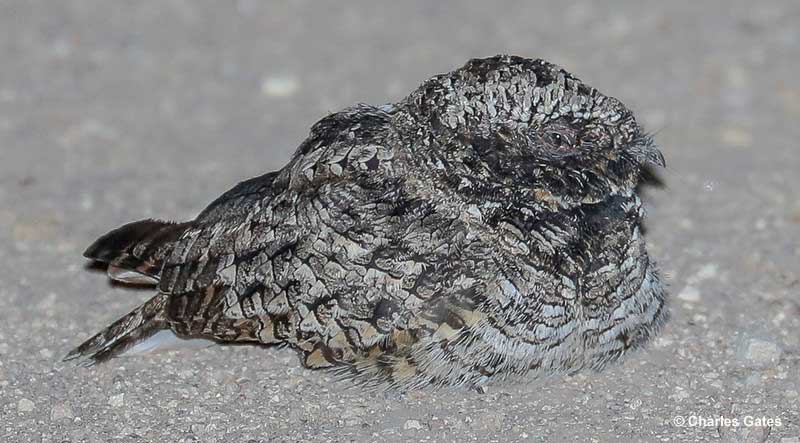
Bears and other mammals hibernate but what about birds? Do birds hibernate? Hibernation in birds is very rare because they are a lot more mobile than mammals. To escape cold weather and lack of food, they can just use their wings to migrate to warmer areas.
So, what is the only bird that hibernates? On cold nights, several hummingbirds that live in cool climates slow their heart rate and lower their body temperature. This process is known as “torpor” and although it is essentially a temporary form of hibernation, it only lasts for one night.
The one bird species that does hibernate is a bird in the Nightjar family. Related to nighthawks and Whip-poor-wills, the Common Poorwill can “sleep” for 25 days.
See this article to learn all about this unique bird, why it hibernates, and how it can sleep for more than three weeks!
On this page
The Only Bird That Hibernates
The Common Poorwill is a small, moth-like nocturnal bird around the same size as a Wood Thrush or a grosbeak (nearly 8 inches long). It is mottled gray with some black markings, and has black on its throat and face. This species also has a bit of white on the lower part of its throat, and some buff coloration on its belly, under its tail, and under its wings.
Both sexes of the Common Poorwill look the same except that males have white on the outer tip of their black and gray tail. Females have a dull buffy tip on their mottled gray tail.
Common Poorwills also have medium-length, rounded wings, and a fairly short, broad tail.
This nightjar species lives in grasslands, deserts, and other open habitats in much of the western USA east to Kansas. They also live in a few areas in western Canada and in northern Mexico. Many are also believed to migrate to the southwestern USA and Mexico for the winter.
The Common Poorwill feeds on insects that it catches from dusk to dawn. It forages by waiting on a rock or on the ground and sallying into the air to snatch bugs with its wide mouth.
This species gets its name from its distinctive, repeated call, “poor will”. This is a common sound of spring and early summer nights in open habitats of the west.
What Does the Hibernation Process Look Like?
Common Poorwills often lower their body temperature and metabolism for short periods of time but also hibernate for longer periods. The usual hibernation period lasts for ten days or so, but some have been recorded hibernating for 25 days.
To enter hibernation, they reduce their breathing rate, metabolism, and heart rate, and lower their temperature to just 41°f (the lowest body temperature recorded for any bird species!).
Related: 101+ Bird Facts & Statistics With Infographics
Whether entering torpor for a few hours or hibernating for several days, the main factors that start the process are lack of food and/or cold weather. On cool nights in Spring and Fall, Common Poorwills often enter torpor for several hours and then become active again at dawn.
They can also enter torpor when incubating and at other moments. However, from December to February, many Common Poorwills hibernate for several days at a time. Other than feeding more often at dusk, these birds don’t do a whole lot to get ready for hibernation.

Image credit: Rolf Nussbaumer via Audubon
They can also use the same roost sites for extended hibernation as they do at other times of the year. Although some will hibernate in small caves, most “sleep’ on the ground, usually next to a rock, small tree, or bush.
During hibernation, this species tucks in its head and holds its straight down. It usually wakes back up when the air gets warmer.
Fun Facts About Common Poorwill’s Hibernation
- “The Sleeping One” – Native American peoples have known about the Common Poorwill’s hibernating capabilities for centuries. In the language of the Hopi culture, this species is known as the “Hölchoko” (The Sleeping One).
- Comb on their toe – Common Poorwills and some other species of birds have a toe with a comb-like structure. Known as a “pectinated claw”, they use this special feature to scratch themselves and preen and arrange their feathers.
- True desert survivalists – In addition to hibernating in cold weather, the Common Poorwill is also highly adapted to living in hot weather. This bird has panting, sweating, and other adaptations that help it shed large amounts of excess heat.
- Crepuscular and nocturnal – This species is nocturnal but is also “crepuscular”. This means that it is active right at dawn and dusk as well as during the dark of the night.
- Can act like s snake – When disturbed, especially at their nest, Common Poorwills can open their wide mouth, fluff their feathers, make hissing sounds, and raise their wings.
Frequently Asked Questions
Why don’t birds usually hibernate?
Birds don’t usually hibernate because it is much easier to fly and migrate to warmer regions. Birds that don’t need to eat insects can also still feed on fruit, seeds, and nuts during the winter months.
Why do Common Poorwills hibernate?
Common Poorwills hibernate so they can save energy when their is less insect food available, or if it is cold outside.
What is the difference between a Poorwill and a Nighthawk?
The difference between a Poorwill and a Nighthawk is that Poorwills only fly near the ground, have shorter wings and tails, and don’t have any white in their wings. They also say their name, “poor will, poor will“. Nighthawks have long, pointed wings, flutter and glide high above the ground, and have longer tails. They also have a white patch near the tip of each wing, and make buzzy or trilling calls.


